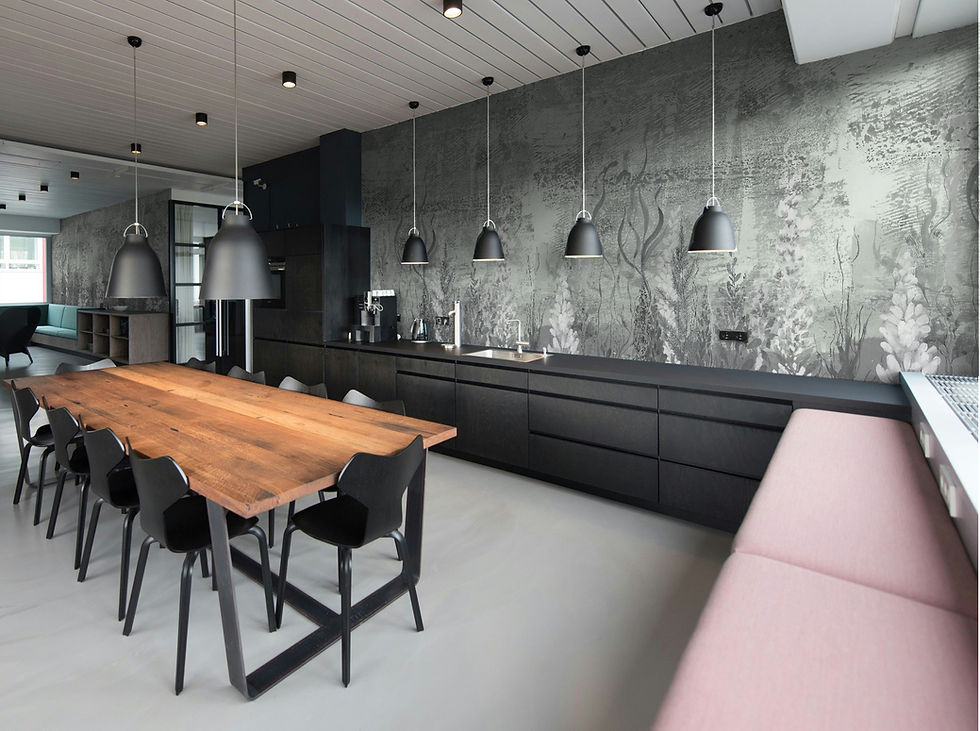Why Fire Ratings Matter for Wallcoverings
- Guillermo
- Jul 1
- 4 min read
When selecting wallcoverings for a building or space, many factors come into play. One crucial aspect that often gets overlooked is the fire rating of these materials. Fire ratings are essential for ensuring safety, especially in commercial environments, where strict building codes are enforced. Understanding fire ratings can also influence the aesthetic choices and the durability of wallcoverings.
Understanding Fire Ratings
Fire ratings provide an indication of how materials will behave when exposed to fire. They are crucial for minimizing risks in case of a fire outbreak. Fire ratings typically measure the speed at which flames spread on a surface and the potential for smoke generation. Two common tests to determine these ratings are ASTM E84 and NFPA 286.
The higher the fire rating, the more resistant a material is to flames. Buildings are often required by law to use materials with certain fire ratings, especially in commercial or public spaces. These requirements aim to protect lives and property by reducing the fire's spread and potential damage.
Why Fire Ratings Matter for Wallcoverings
The significance of fire ratings extends beyond compliance with regulations. Selecting wallcoverings with the appropriate fire ratings can minimize the risk of fire damage and ensure a safer environment.
One benefit of choosing fire-rated wallcoverings is peace of mind. You can rest assured that the materials used in your space have been tested and proven to reduce fire hazards. This is particularly vital in public spaces such as hospitals, schools, and hotels, where many people congregate, making quick evacuation necessary.
Moreover, in the unfortunate event of a fire, using wallcoverings that meet fire safety standards can significantly slow down the flames' spread. This critical time can mean the difference between life and death. A material with a better fire rating can help contain the fire, allowing more time for emergency services to react and for occupants to evacuate.
What is ASTM Fire Rating Class A?
When discussing fire ratings, "Class A" is often mentioned. The ASTM E84 test categorizes materials into three classes: A, B, and C, depending on their performance. Class A materials, which can be found here, have the highest flame resistance and smoke development ratings. This class is essential in spaces that require stringent fire safety regulations.
Materials achieving Class A fire ratings limit flame spread and smoke production significantly, making them ideal for use in high-occupancy buildings. The use of wallcoverings with an ‘A’ rating is sometimes mandated by law in commercial constructions.
For example, a hospital may need wallcoverings with a Class A rating in patient rooms to enhance safety and minimize risk in case of a fire. Class A materials like some textiles and vinyls are often chosen in places requiring both aesthetic appeal and fire safety.
Compliance with Building Codes
Building codes across various regions often require compliance with specific fire safety regulations. For instance, many cities mandate that wallcoverings in commercial buildings must be rated Class A to enhance safety standards. Failing to comply with these codes can lead to legal repercussions and insurance issues.
Complying with fire safety codes can also be an effective marketing strategy. Businesses that showcase their commitment to safety through fire-rated materials can often appeal more to clients and customers. It shows that the organization values not only aesthetic design but also the well-being of occupants.
Selecting Fire-Rated Wallcoverings
When selecting wallcoverings, it is essential to confirm their fire rating. Here are some tips to help navigate the selection process:
Check Certifications: Always inquire about certifications and fire ratings from manufacturers. Ensure the wallcovering has been tested and meet the required standards.
Consult Professionals: Engage architects and designers familiar with fire safety requirements. They can recommend options that fuse aesthetics with compliance.
Consider Installation: Proper installation is crucial for achieving optimal fire performance. Ensure that installers are trained in the best practices for fitting fire-rated wallcoverings.
Evaluate Your Environment: Take into account the specific usage of the space. High-traffic areas might require more fire-resistant wallcoverings compared to other regions.
Regular Inspections: If wallcoverings are already installed, consider regular inspections to ensure they still comply with fire safety regulations.

The Bigger Picture: Safety and Design
Incorporating fire-rated wallcoverings does not have to compromise aesthetic design. Many modern wallcoverings combine both beauty and functionality, offering numerous options that can transform spaces without sacrificing safety. Architects and designers are increasingly prioritizing materials that balance these two essential aspects.
The market also offers various finishes and textures, making it easy to complement any decor style. From vibrant graphics to muted tones, there are fire-rated wallcoverings suitable for any environment, ensuring safety is not a dull experience.
Ensuring Long-Term Value
Investing in fire-rated wallcoverings can provide long-term value. While they may come with a higher upfront cost compared to ordinary wall materials, the investment often pays off by enhancing safety and possibly lowering insurance premiums. Companies are also less likely to face fines related to non-compliance with fire safety regulations when they prioritize fire-rated materials.
Moreover, in today's eco-conscious market, many manufacturers are producing sustainable wallcovering options that are both aesthetically pleasing and fire-rated. This alignment with sustainability can enhance a brand's image, particularly in industries looking for eco-friendly solutions.
In conclusion, understanding why fire ratings matter for wallcoverings is crucial for ensuring safety and compliance in any space. Manufacturers, architects, and designers can work together to create environments that prioritize both beauty and safety through fire-rated materials. When planning your next interior design project—whether residential or commercial—consider the significance of fire ratings and make informed decisions that pave the way for a safer future.




Comments